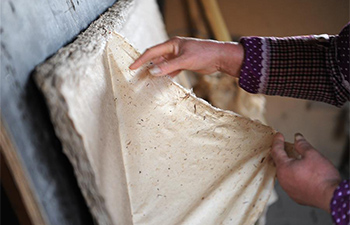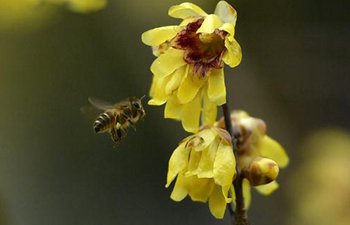SAN FRANCISCO, Jan. 20 (Xinhua) -- A group of scientists with U.S. Stanford University have discovered a new type of cellulose in bacteria that could be used as a source for renewable fuels and antibiotic drugs in the future.
A study by the Stanford researchers, whose findings were carried in the latest version of the journal Science, said the new modified cellulose, called pEtN, was extracted from one of the best studied bacteria -- E. coli, which is a large group of bacteria that can cause diarrhea, urinary tract infections, respiratory illness, pneumonia and other illnesses.
Lynette Cegelski, an assistant professor of chemistry at Stanford and senior author of the research, discovered that the new cellulose had properties that were thought to be made to improve other sources of cellulose such as switchgrass or poplar for producing ethanol for fuels.
While the new cellulose does not create crystals and is more soluble in water, scientists believe that it is more easily converted into glucose, the starting material for producing ethanol, at a lower cost.
Generally speaking, ethanol is made from the sugary kernels of corn, and its production competes with corn as a food source.
Unlike the conventional way of production, cellulose-based ethanol is extracted from the entire plant, rather than just the kernels, and it does not compete with a food source.
The new properties of the modified cellulose made it possible to defeat traditional cellulose in terms of environmental benefits and higher economic efficiency.
On the medical front, the modified cellulose, which nurtures and surrounds bacterial colonies making up some infections, could be used to treat those infections if experiments on mice prove positively that the production of those bacteria is inhibitable.
Cegelski and her team have examined not only the structure of the new cellulose but also the genes and molecules contributing to its birth.
They have observed that the new cellulose can be modified by the enzymes during the process of its production.
Cegelski said she hopes that plant biologists may help introduce genes for making the modified cellulose from bacteria into plants, which can in turn produce more cellulose after they are grown on a large scale.
If there is a large amount of cellulose available, the new form of cellulose could be used in many more applications such as in the biomedical, material or basic chemical fields, according to the study.
















